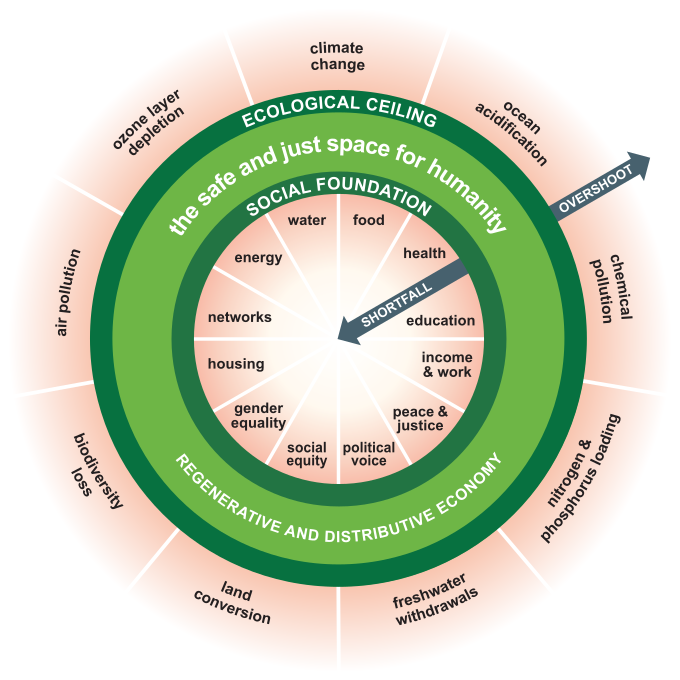2 What is Doughnut Economics?

An influential variation of the Planetary Boundaries model is Kate Raworth’s Doughnut Economics (Raworth 2015). This combines the planetary boundaries with social boundaries (inspired by UN Sustainable Development Goals, see next section).
So on the doughnut model, our task is to keep our activities within the safe and just space, where planetary boundaries are not crossed, and essential human needs are met.
Under one analysis, our current ecological and social crises are the result of a fundamentally unsustainable growth-based economic model. Raworth flips the growth model. Rather than prioritising economic growth, the Doughnut framework imagines an economy which prioritises meeting the needs of people without overshooting Earth’s ecological ceilings or undermining social foundations. The idea is to switch from a degenerative to a regenerative economy for the new century. Raworth is neither pro- nor anti-economic growth: the point is to entirely shift how we value true prosperity.
Critics suggest that for the model to work people would have to “magically” become indifferent to how well we do compared to others, and not really care about wealth and income. But perhaps we would be happier that way? The Doughnut model was formally adopted by Amsterdam in April 2020; Brussels and the Canadian city of Nanaimo have since followed suit.
See also Degrowth & Postgrowth later in this toolkit.

